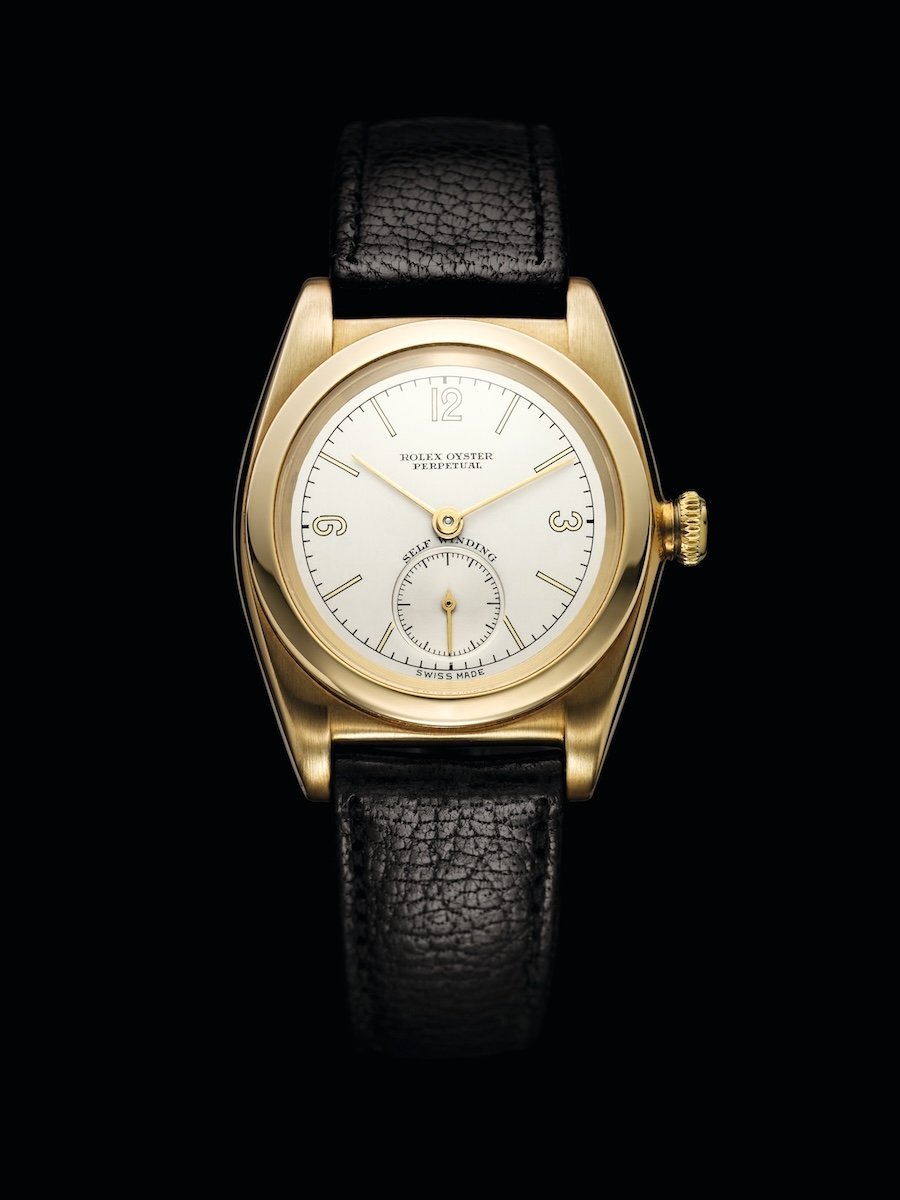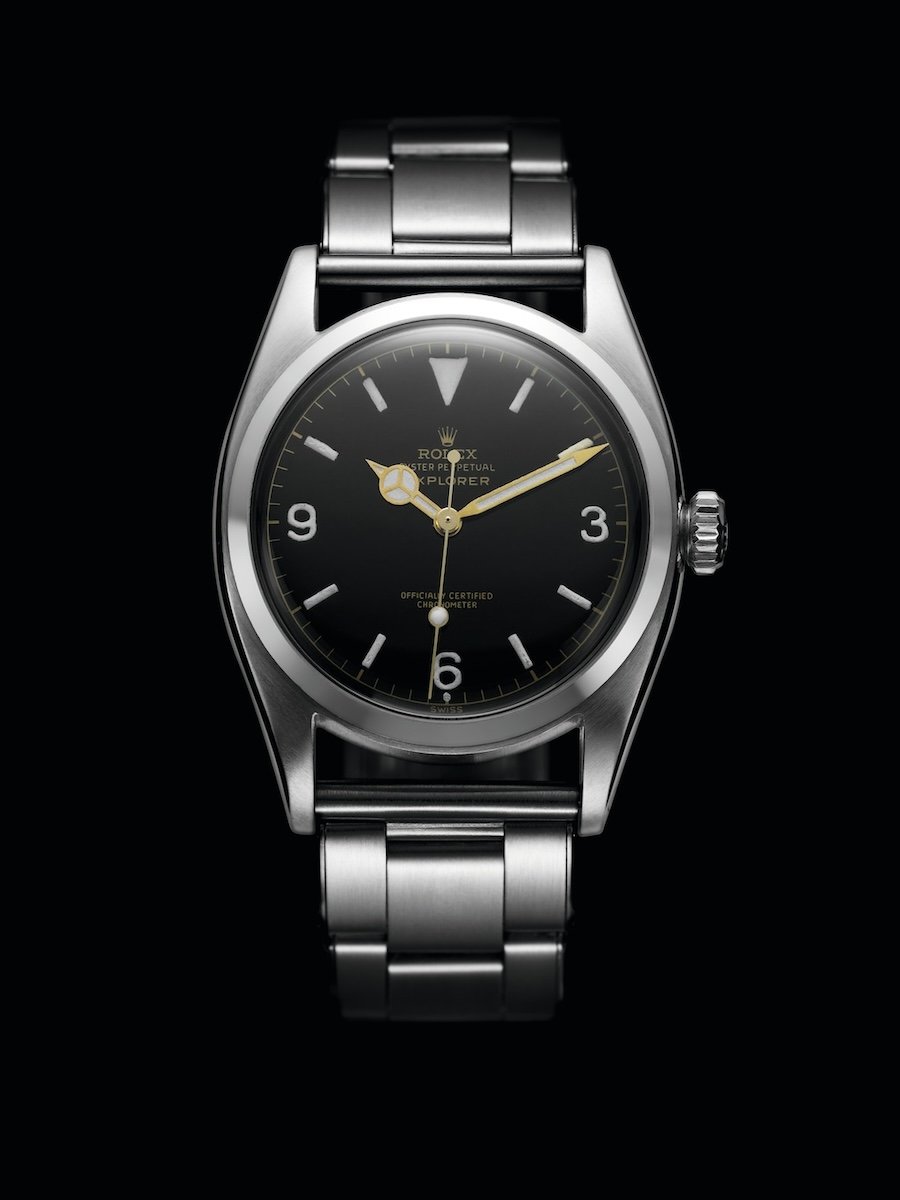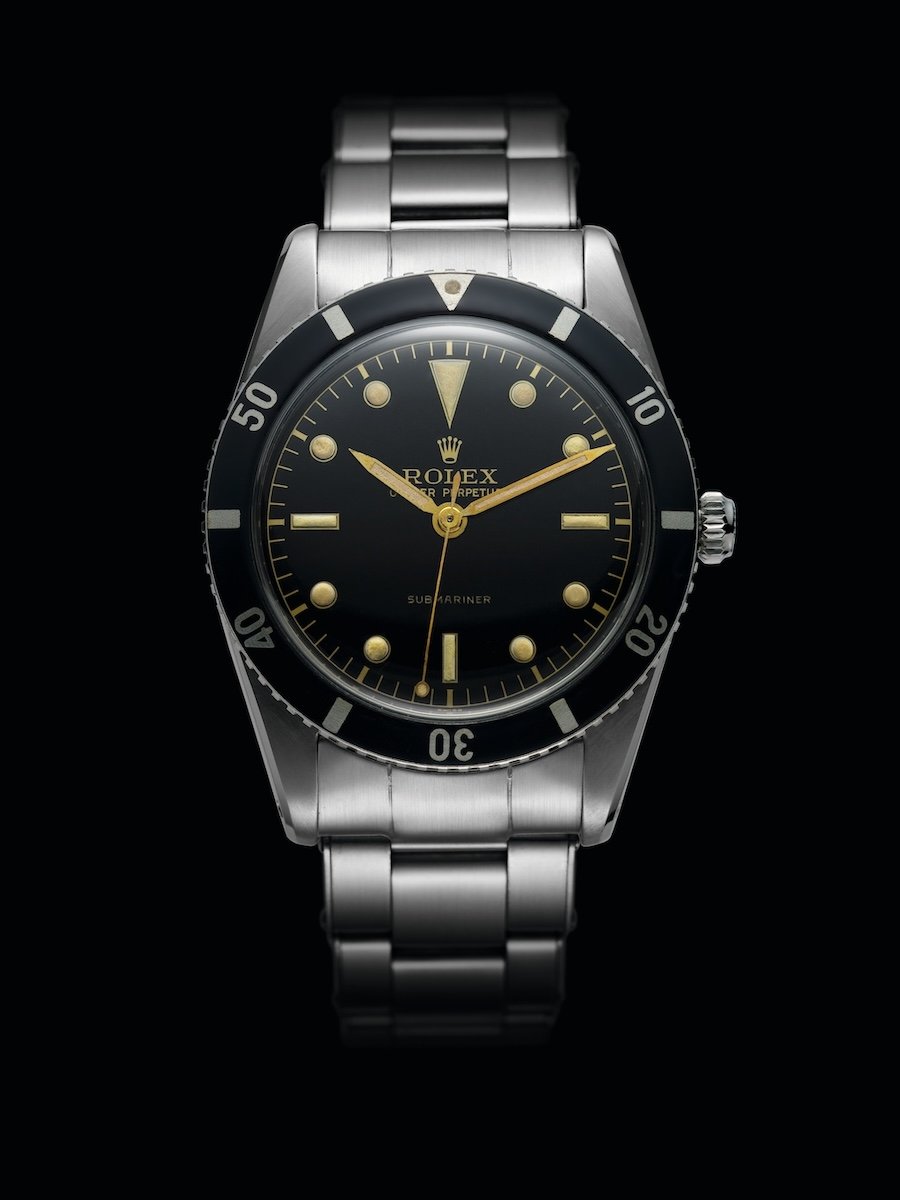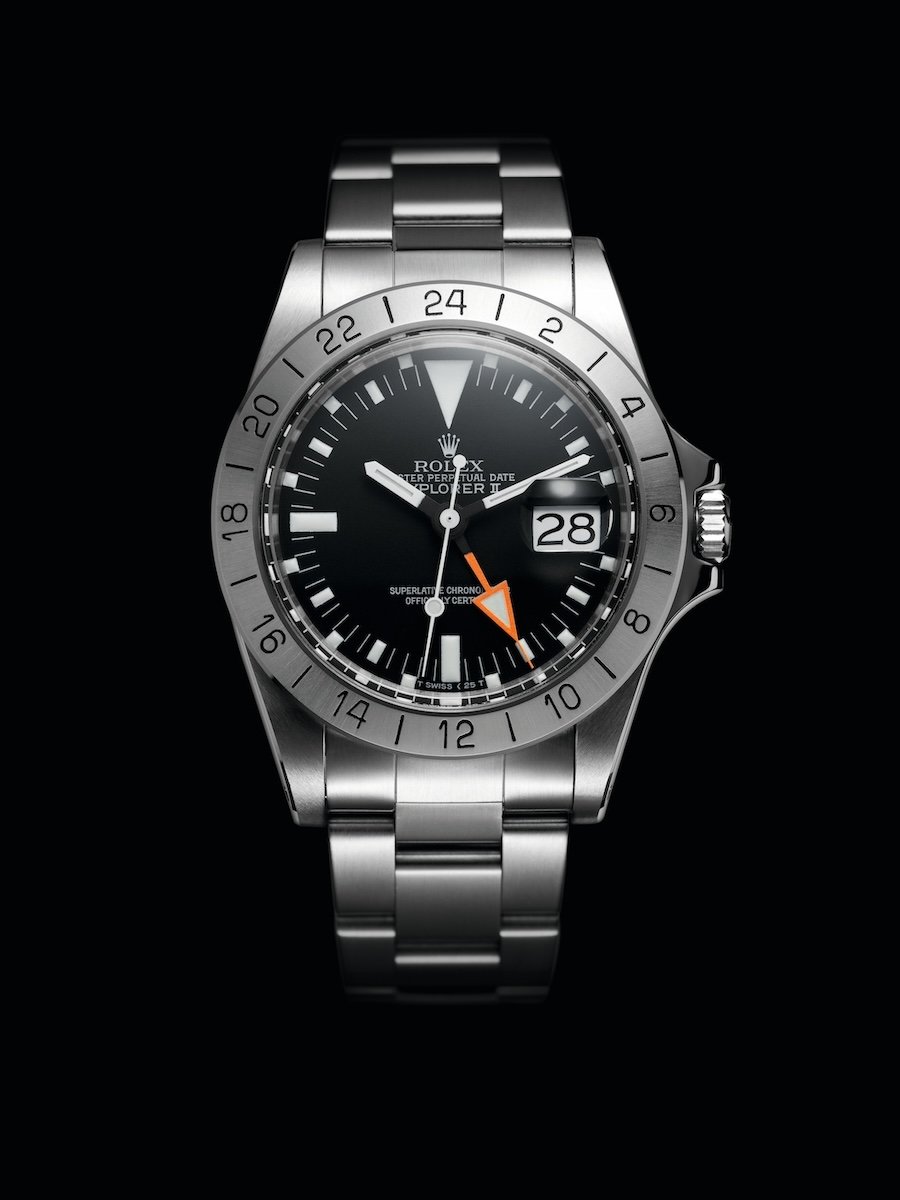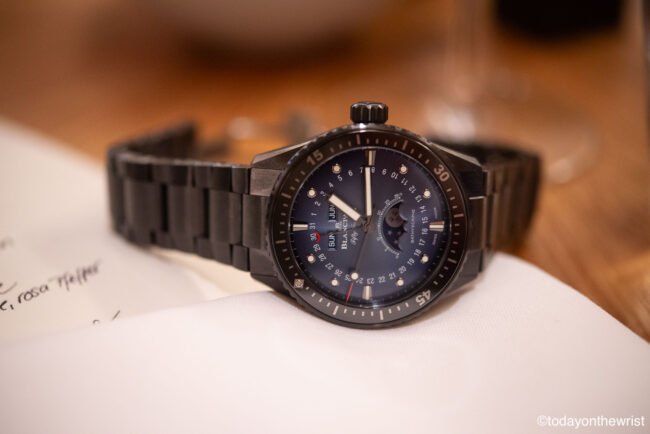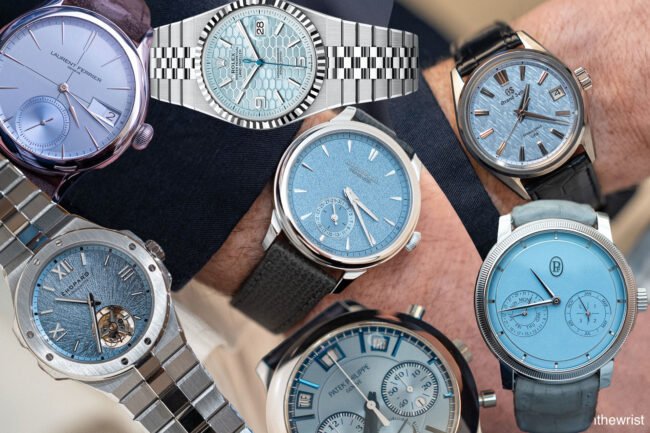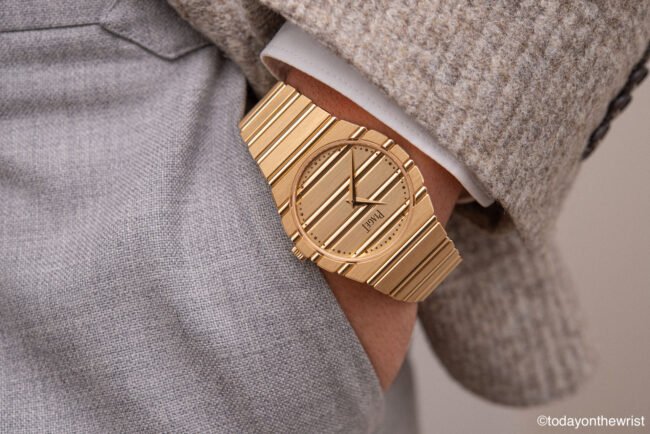In this article, you will find a brief description of key milestones in the history of the Rolex brand, along with a chronology of the creation of its models. The story begins with the first Rolex Oyster model, introduced in 1926, and goes up to 2012, when Rolex introduced the Sky-Dweller model. We won’t go into detail on every Rolex reference in this article. Instead, it presents a chronological overview, providing a broad understanding of when Rolex introduced various models. Read on for the story and accompanying photos.
Hans Wilsdorf and his visionary genius
The Rolex adventure began in the early 1900s. Born in Bavaria, Germany, Hans Wilsdorf started his career in watchmaking in La Chaux-de-Fonds, Switzerland. In an era when pocket watches were the order of the day, he was quick to see the potential of the wristwatch for the 20th century, despite their not yet being very precise and being generally considered to be items of jewellery of particular appeal to women.
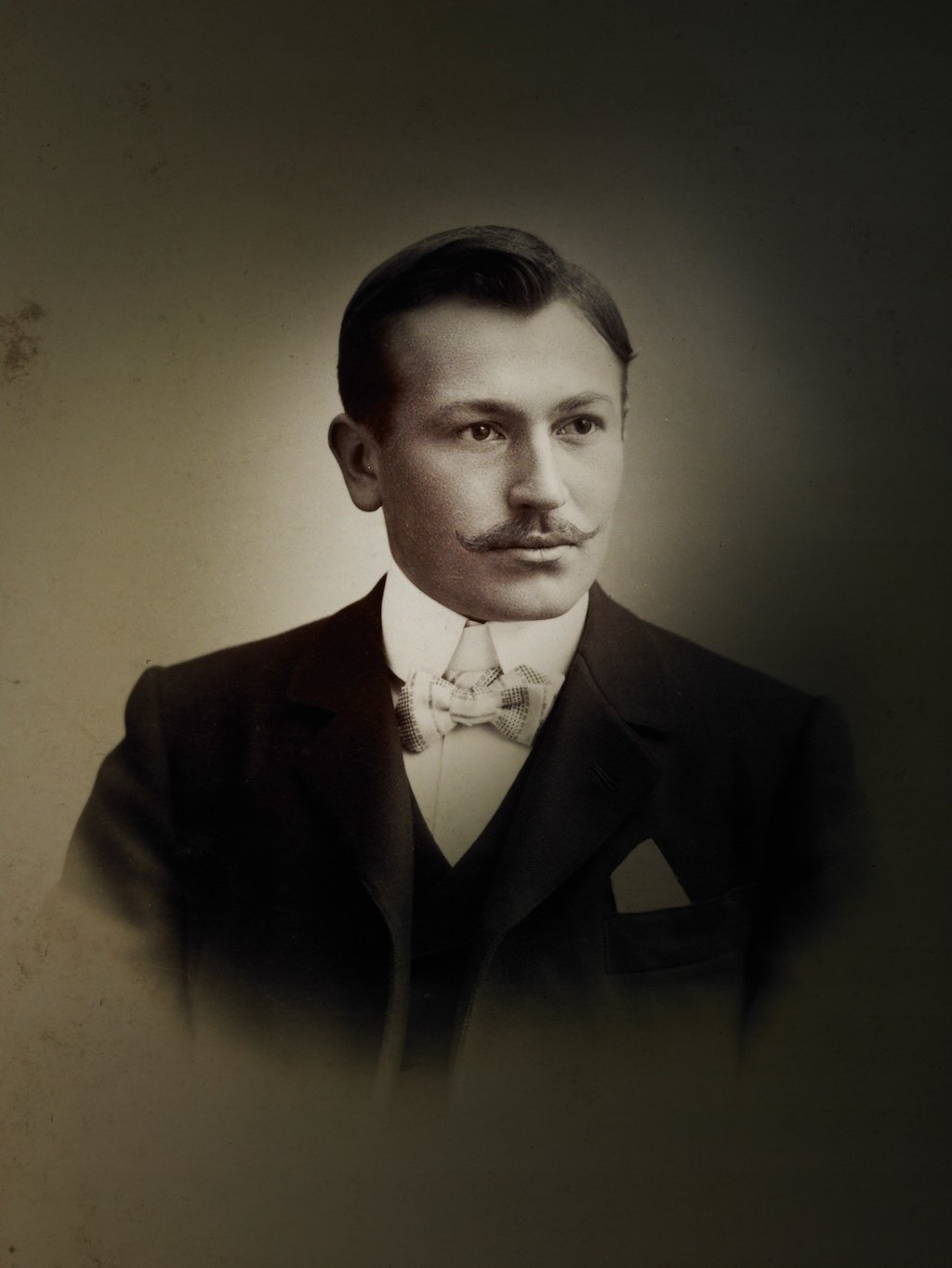
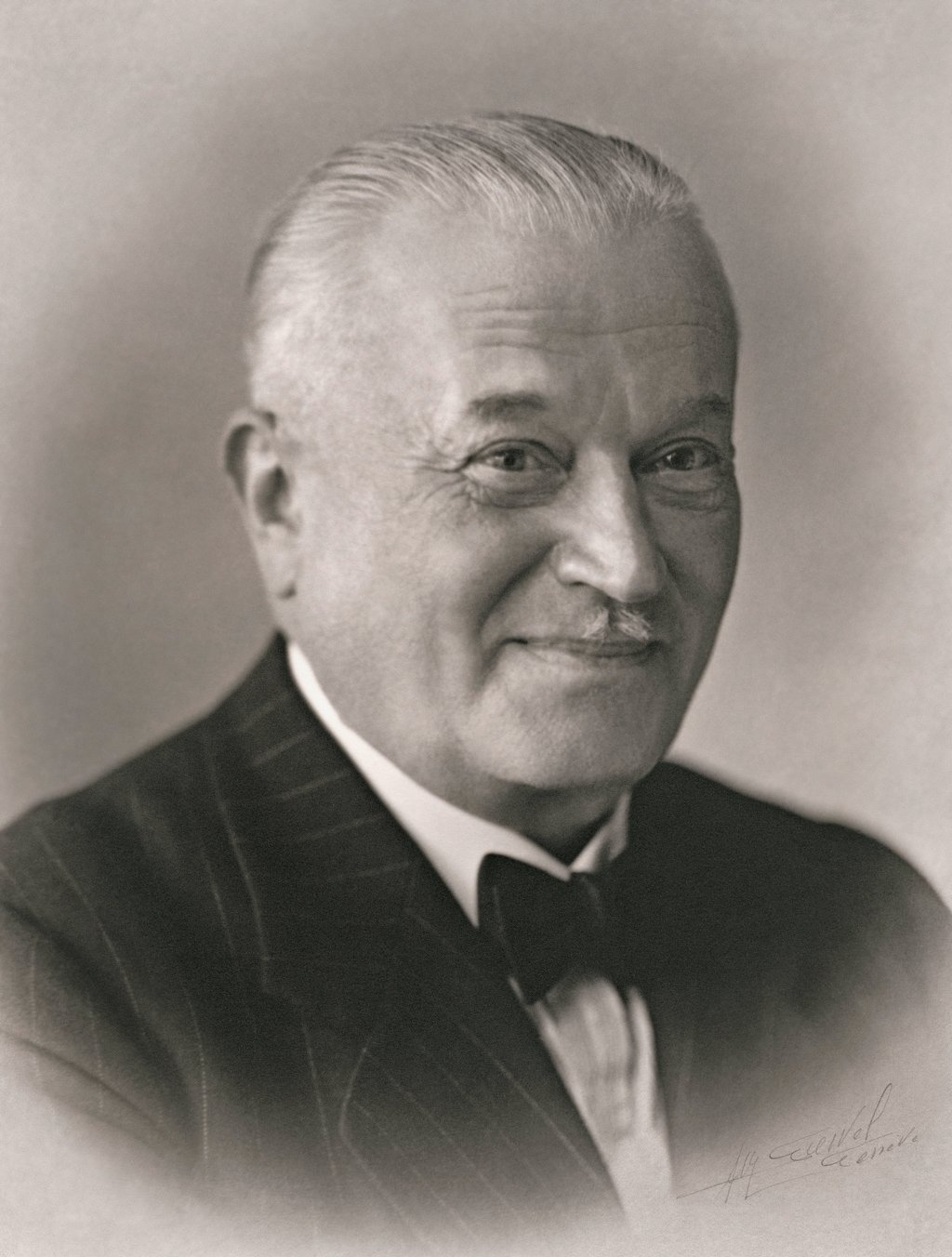

Hans Wilsdorf foresaw that the wristwatch was destined to become an everyday object – for men as well as for women – provided it could be made a precise, waterproof, robust and reliable instrument. His stroke of genius was to anticipate this evolution, which is now taken for granted.
Chronometric precision and waterproofness
In 1905, when living in London – then the economic and financial capital of the world – Hans Wilsdorf founded with his partner the firm Wilsdorf & Davis specializing in the distribution of wristwatches in Great Britain and the British Empire. The watch components were produced by Swiss partners selected for their expertise. Among them was the Maison Aegler in Bienne, which would eventually become the Manufacture des Montres Rolex S.A. Hans Wilsdorf regarded it as the only manufacturer at the time able to produce the small, precise movements he so needed for his wristwatches. Observing the remarkable rise in leisure time and the practice of sports, Hans Wilsdorf wanted to prove to a still sceptical public that wristwatches and chronometric precision were compatible. He made a point of having his watches tested by official testing bodies.

In 1910, a Rolex wristwatch – Hans Wilsdorf had invented the name ‘Rolex’ to sign his creations in 1908 – obtained the first certificate in the world granted to such a watch by the Official Watch Rating Centre in Bienne, Switzerland.


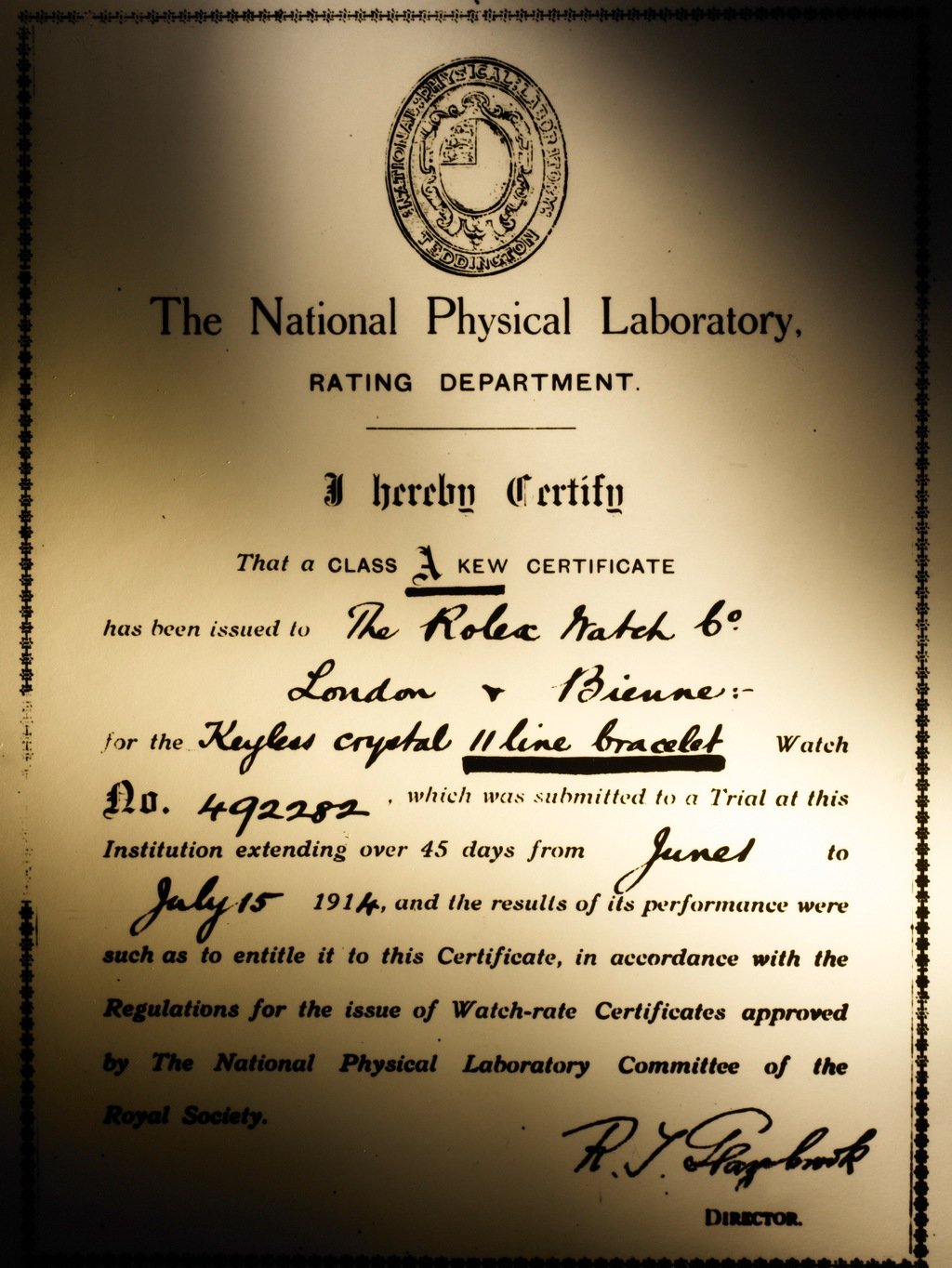
Four years later, in 1914, a different Rolex model received from the prestigious Kew Observatory in England – the world’s highest authority at the time for measuring watch precision – the first ‘Class A’ certificate accorded to a wristwatch, a distinction until then reserved for marine chronometers. This was proof that wristwatches and chronometric precision could go hand in hand. The next challenge was waterproofness. The precision and durability of a wristwatch would be seriously compromised if its case did not keep out water and dust. Hans Wilsdorf would draw on his spirit of enterprise and his energy to make the wristwatch waterproof.
The invention of the name Rolex
Foreseeing the importance of the brand concept, Hans Wilsdorf decided very early on to use the name of his choice to sign his creations. The criteria he used to come up with the word ‘Rolex’ still sound very modern today. He sought a name that would be:
▪ short, five letters maximum;
▪ easy to pronounce in any language;
▪ pleasant sounding;
▪ easy to remember;
▪ possible to inscribe elegantly on the dial and movement of his watches.
Hans Wilsdorf left England in 1919 to settle in Geneva, Switzerland, where he founded Montres Rolex S.A. in 1920. This brought him closer to his movement manufacturer – the Maison Aegler based in Bienne – and allowed him to optimize their collaboration. The international reputation of Geneva and its watchmaking tradition also played an important role in his decision.
Now that you’ve already learned a few details about the brand, let’s delve deeper into the chronology of the creation of Rolex models.
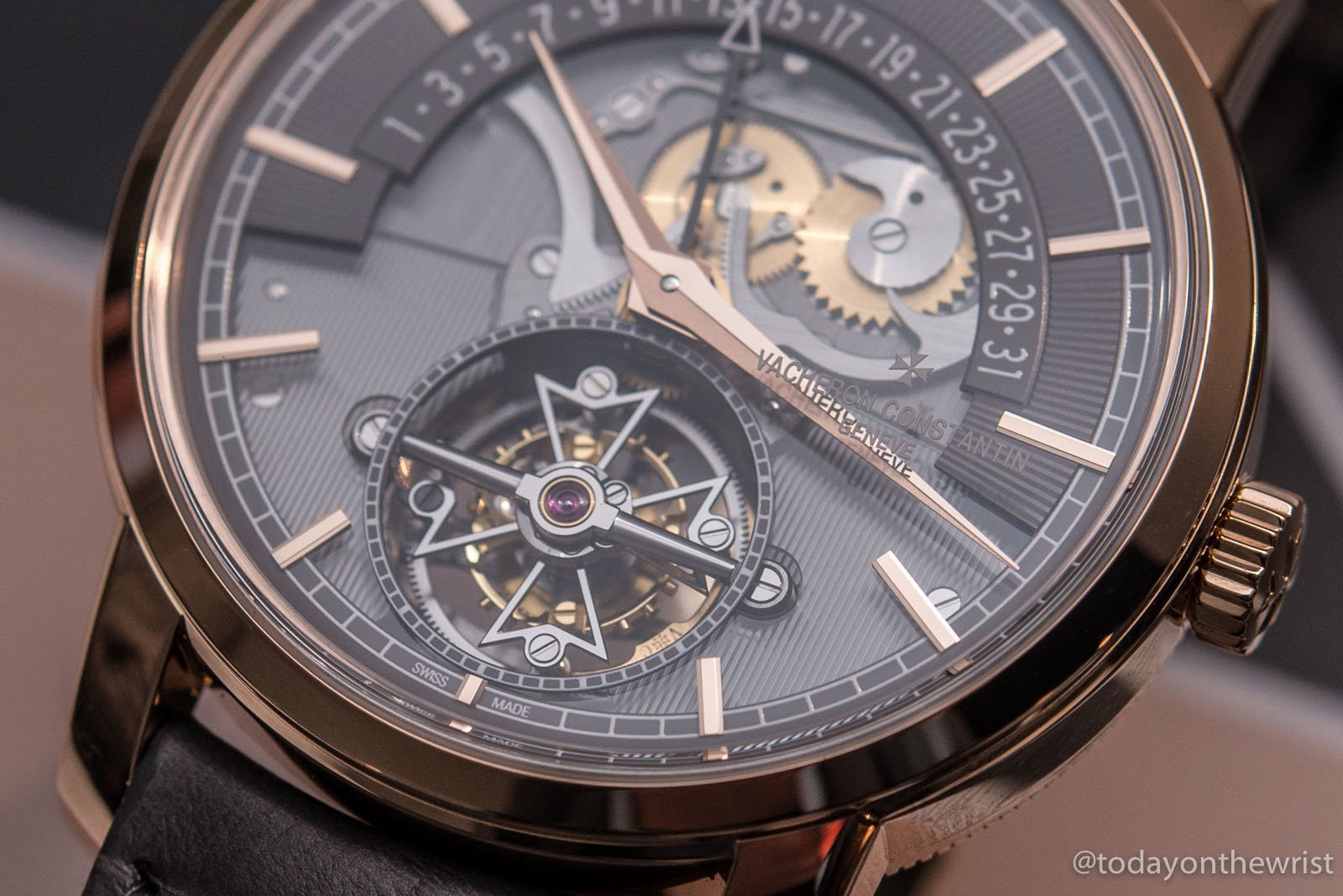
Join our TElegram Channel for behind-the-scenes content
Oyster: The first waterproof wristwatch
In 1926, Hans Wilsdorf’s efforts to achieve waterproofness proved successful with the unveiling of the Oyster, the first waterproof wristwatch in the world. Thanks to an ingenious patented system consisting of a screw-down bezel, case back and winding crown, the case was hermetically sealed, thereby offering optimal protection for the movement.
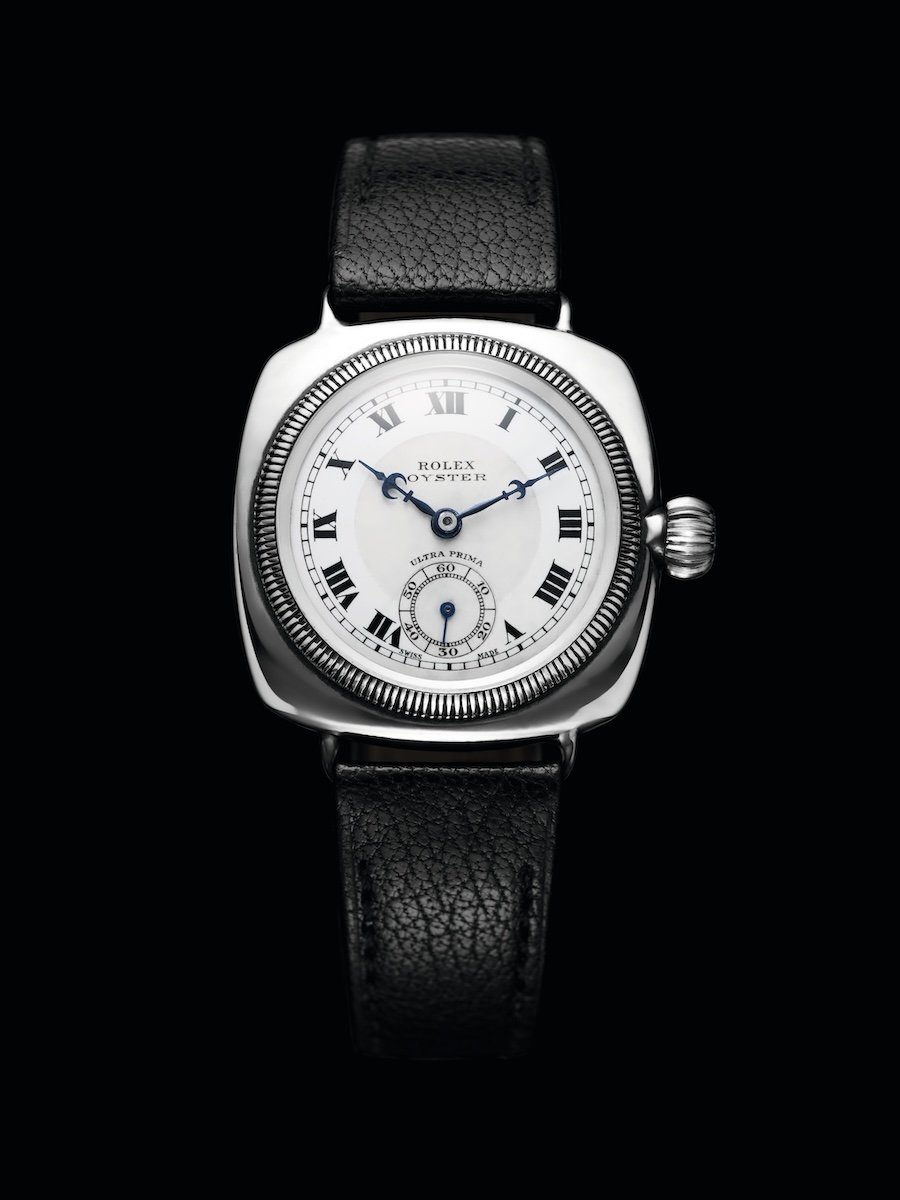
The fluting of the bezel and the case back served a functional purpose. It was used to screw these components onto the middle case with a specific tool invented by Rolex. The fluting also gave the watch its visual identity and unique personality. From the 1950s, the bezels on watches in the Oyster Perpetual collection were no longer screwed down onto the case but friction fitted. Some models continued to feature a fluted bezel, however, and this element would go on to become one of the brand’s signature aesthetic styles.
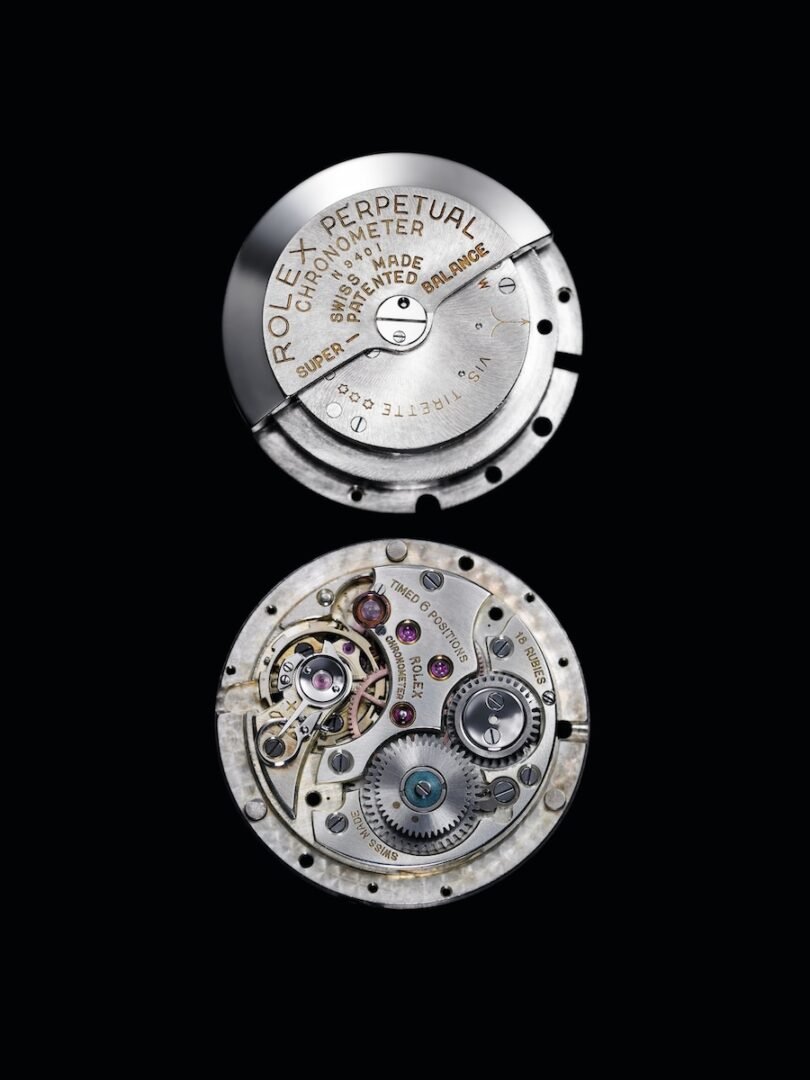
The Perpetual Rotor
As long as a wristwatch had to be wound – daily – by hand, its crown had to be unscrewed, compromising its waterproofness and consequently its smooth functioning. To remedy this, Rolex developed the Perpetual rotor, a self-winding mechanism with a free rotor for the wristwatch. It was the precursor of contemporary self-winding systems.
Introduced by the brand in 1931 and patented, the Perpetual rotor consists of a half-moon-shaped oscillating weight that rotates, driven by the Earth’s gravity, whenever the wearer moves their wrist. The kinetic energy generated by the rotations of this weight is transmitted via the wheels of the winding system to the mainspring, which is wound automatically – the role of this component is to constantly store and release the energy it receives, ensuring greater regularity and better precision of the watch’s regulating organ. As the winding crown is now only used to set functions or to wind the movement manually if it ever stops, it spends the majority of the time screwed down. The Perpetual rotor therefore contributes to the waterproofness of the watch, while at the same time making it more convenient to wear by freeing the wearer from the need to manually wind the movement.
The Rolex Crown and rolesor.
Two other fundamental elements of the brand’s identity entered the picture in the 1930s: the Rolex crown and Rolesor.
The Rolex crown, the logo of the brand, was registered in 1931. It appeared for the first time on Rolex dials during the 1930s, then on the winding crown in the early 1950s, when it also began to replace the 12 o’clock hour marker on the dials.
In 1933 the name ‘Rolesor’ was registered to designate the combination of two different materials, gold and steel, on a Rolex watch. This was first used by Rolex in the 1920s and has since become one of the brand’s distinctive aesthetic characteristics.
The first Rolex Oyster Perpetual Datejust – 1945.
The year 1945 saw the launch of the Oyster Perpetual Datejust, the first self-winding waterproof chronometer wristwatch to indicate the date in a window on the dial. A watch of great distinction, equipped with a specially created Jubilee bracelet and consolidating all the innovations that Rolex had developed until then, it was considered by Hans Wilsdorf to be a masterpiece. Initially designed for men, in the course of the following decade it became available in a women’s version, the Lady- Datejust (1957).
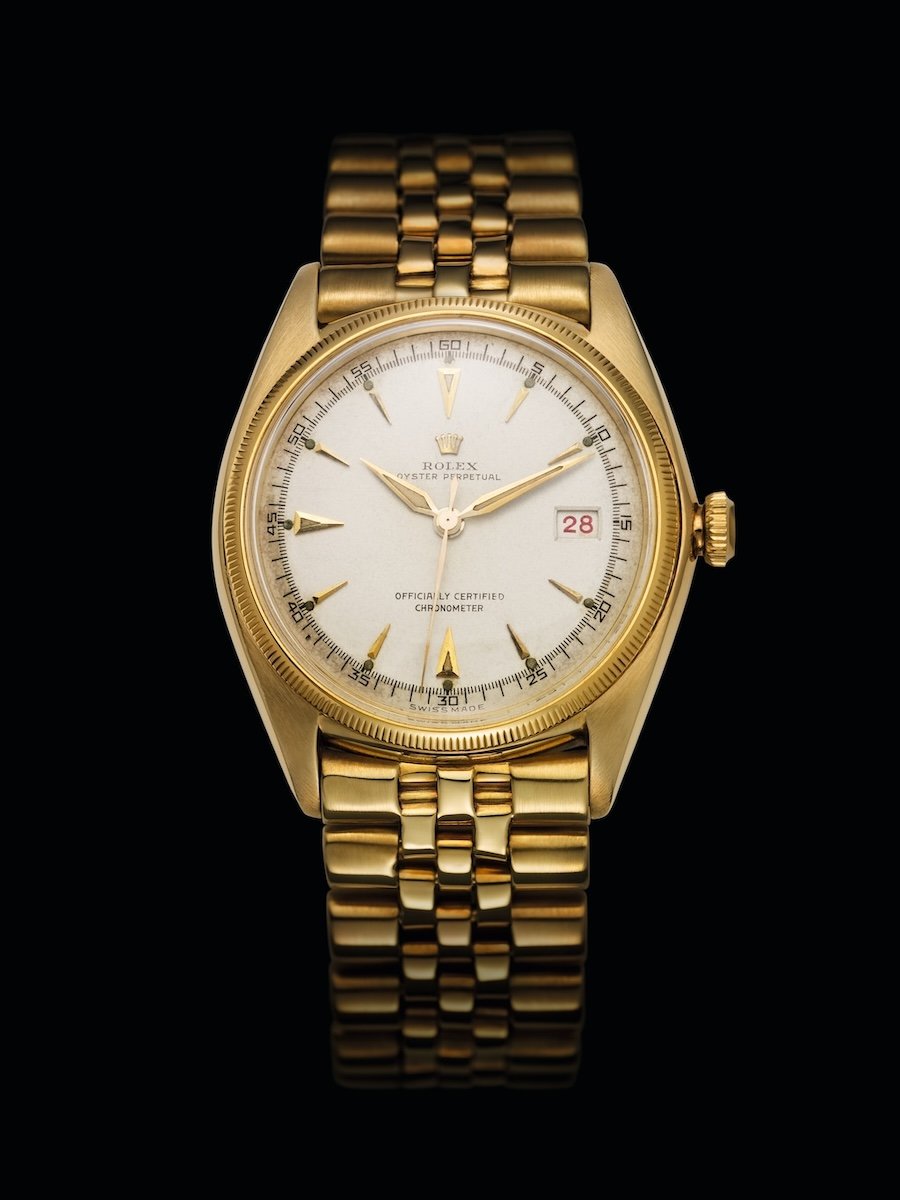
From here, the evolution of Rolex models continues with professional watches, which are so popular these days.
First Professional tool-watches from Rolex – 1953.
As part of the close relationship with the world around us and the emergence of new areas of endeavour such as civil aviation and underwater exploration, in the 1950s Rolex developed ‘Professional’ tool-watches. These timepieces featured particularly useful characteristics or functions for activities in demanding and often extreme environments that required robust and reliable equipment.
The series began in 1953 with the Oyster Perpetual Explorer, created following the first ascent to the summit of Everest, and the Oyster Perpetual Submariner, the first divers’ wristwatch guaranteed waterproof to a depth of 100 metres (330 feet) – then to 200 metres (660 feet) in 1954 – and equipped with a rotatable graduated bezel to display immersion time.
First Oyster Perpetual GMT-Master – 1955.
First Oyster Perpetual GMT-Master – 1955
In 1955, Rolex launched the Oyster Perpetual GMT-Master, a watch capable of displaying both the local time and the time in a different place in the world simultaneously, thanks to its additional 24- hour hand and rotatable 24-hour graduated bezel. It became the official watch of Pan American World Airways, the celebrated American airline better known as Pan Am.
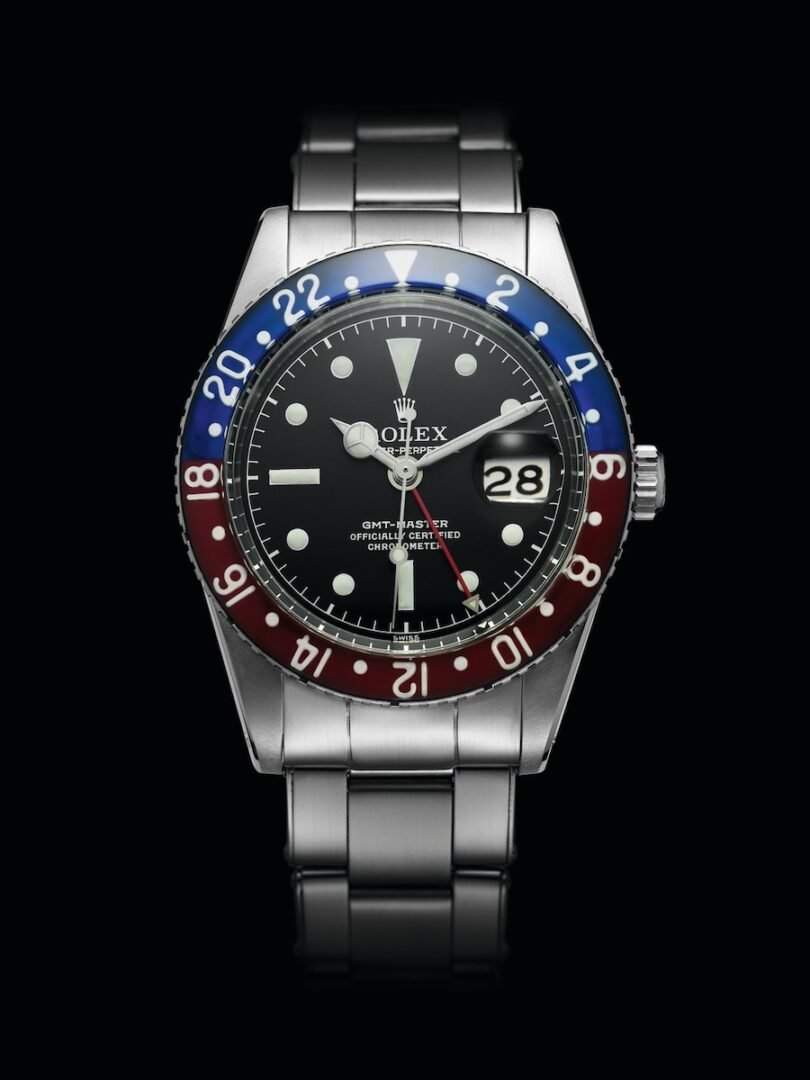
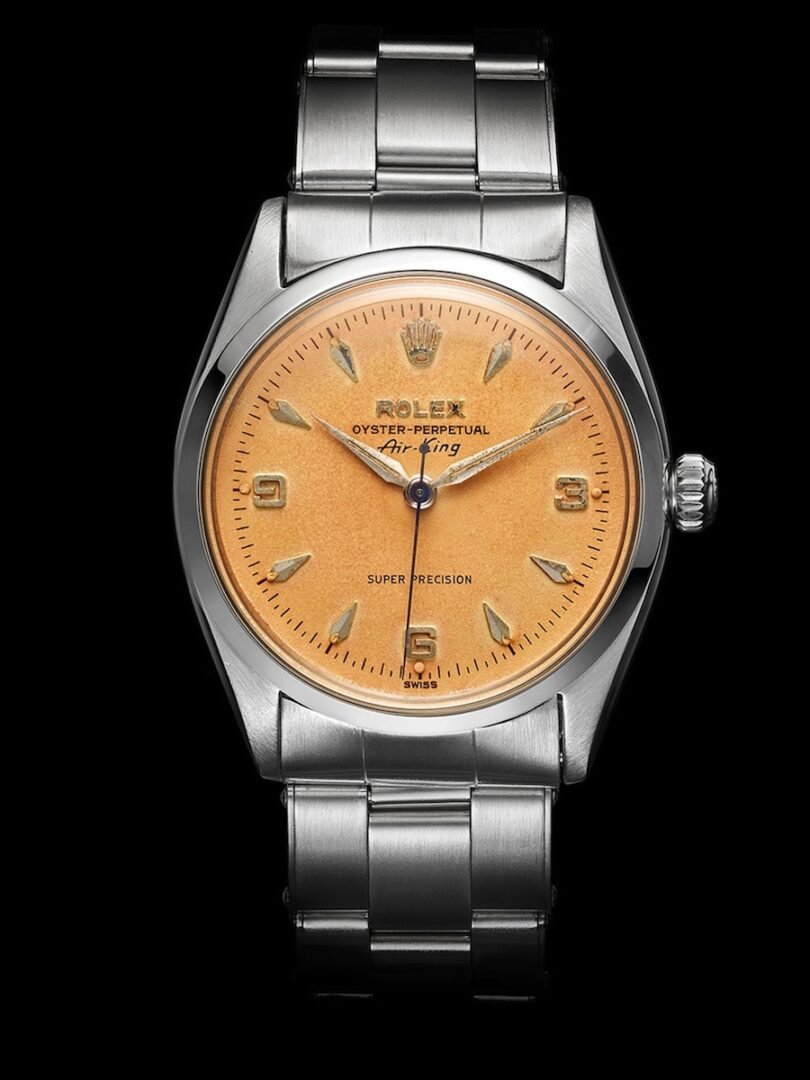
First Rolex Oyster Perpetual Air-King – 1958
In 1958, Rolex presented the Oyster Perpetual Air-King, whose name inscribed on the dial in characteristic lettering makes the model easily identifiable.
The first Rolex Oyster Perpetual Milgauss – 1956.
In 1956, Rolex introduced the Rolex Oyster Perpetual Milgauss. Created as an antimagnetic timepiece, the Milgauss was specially designed for individuals working in power plants, medical facilities, and research laboratories. This model could be seen on the wrists of scientists at the European Organization for Nuclear Research (CERN), which is located in Geneva.
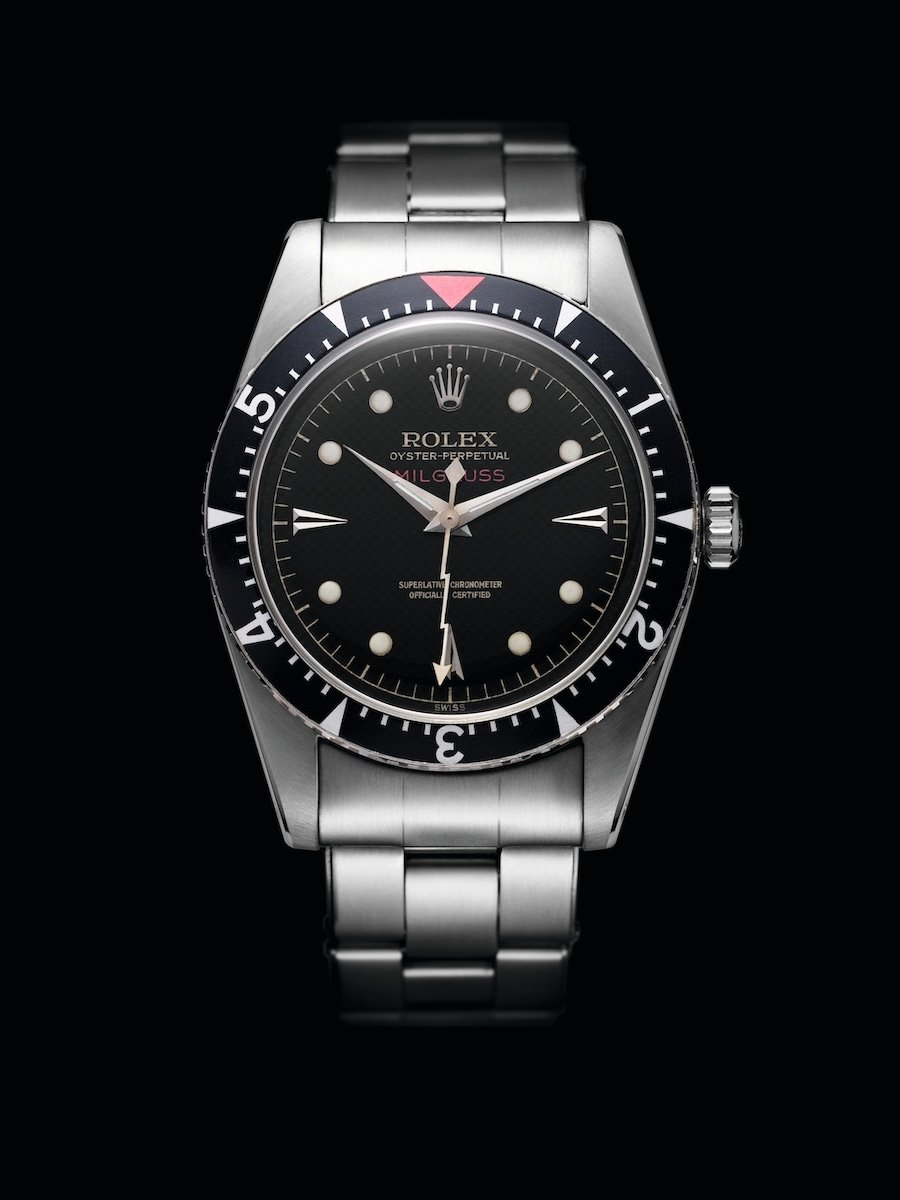
The first Rolex Day-Date – 1956.
In 1956, the Day-Date made its debut. Available only in 18 ct gold or platinum, it was the first wristwatch to display the date and day of the week spelt out in full in a window on the dial. With the President bracelet, originally created specially for it, the Day-Date continues to be the watch par excellence of influential people.
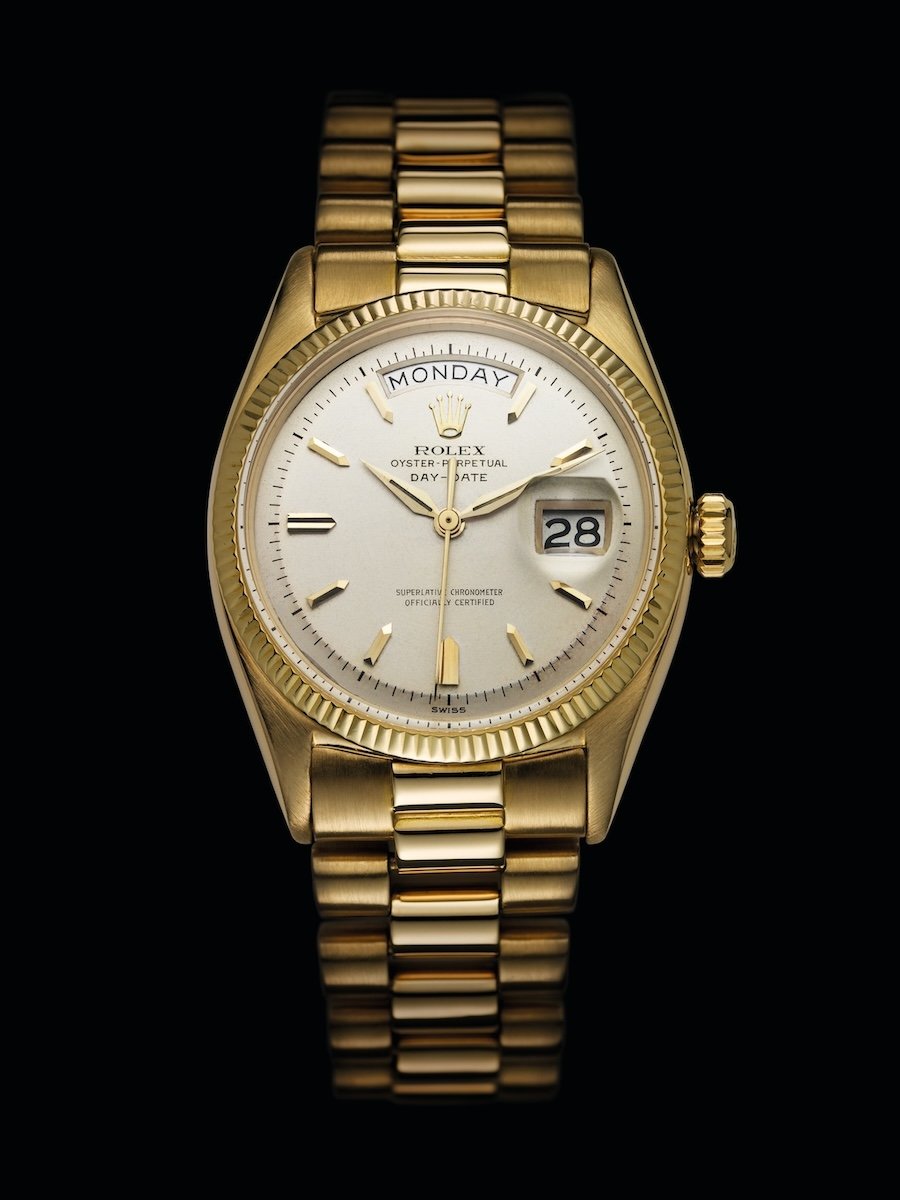
The Rolex Deep Sea Special – 1960.
Rolex watches continued to be associated with major exploits. On 23 January 1960, in the Pacific Ocean south-west of Guam, the bathyscaphe Trieste, piloted by Swiss oceanographer Jacques Piccard and U.S. Navy Lieutenant Don Walsh, descended 10,916 metres (35,814 feet) into the Mariana Trench, the deepest point of the oceans. Attached to the exterior, an experimental Rolex watch, the Deep Sea Special, withstood the colossal pressure equivalent to a weight of more than one tonne per square centimetre. When the bathyscaphe returned to the surface, the watch was found to have kept perfect time – proof that it had kept working for the entire dive.
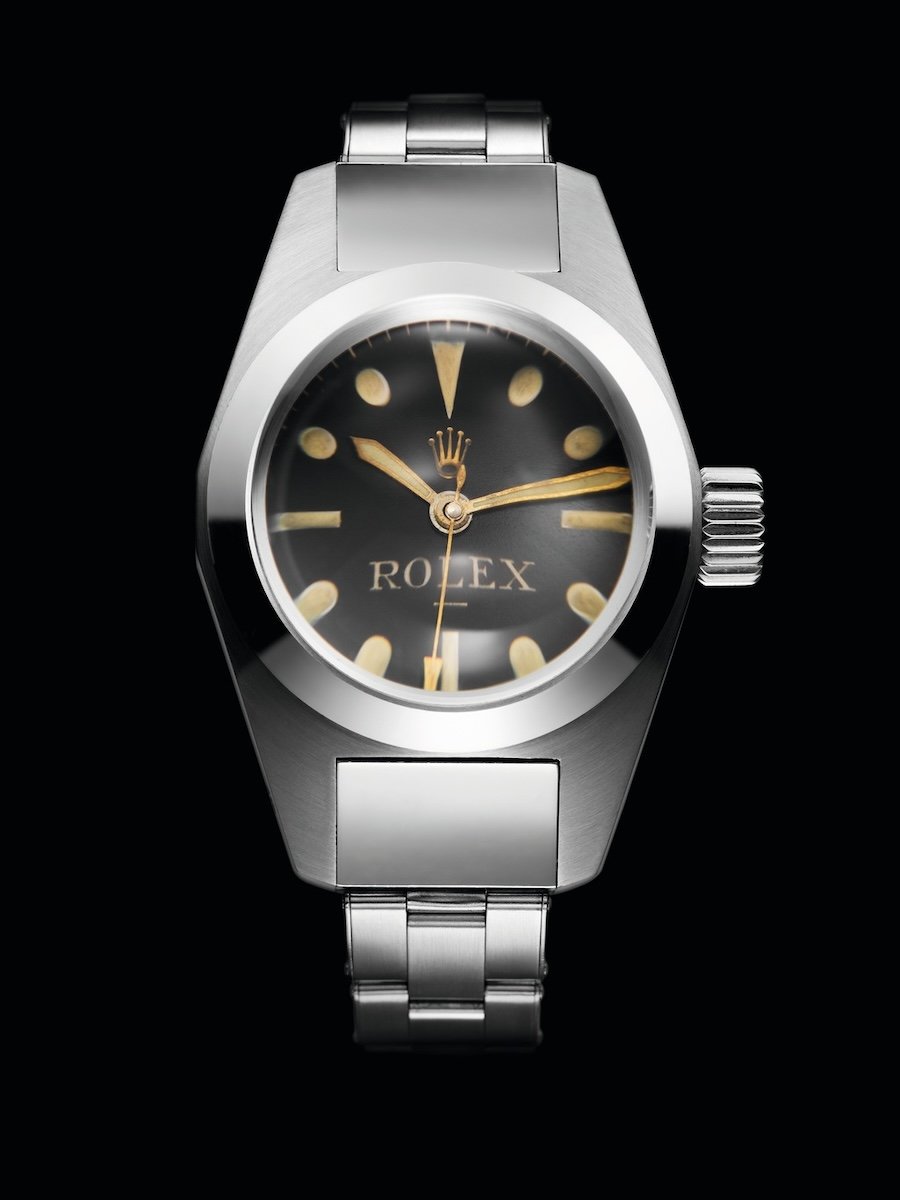
The first Rolex Oyster Perpetual Cosmograph Daytona – 1963.
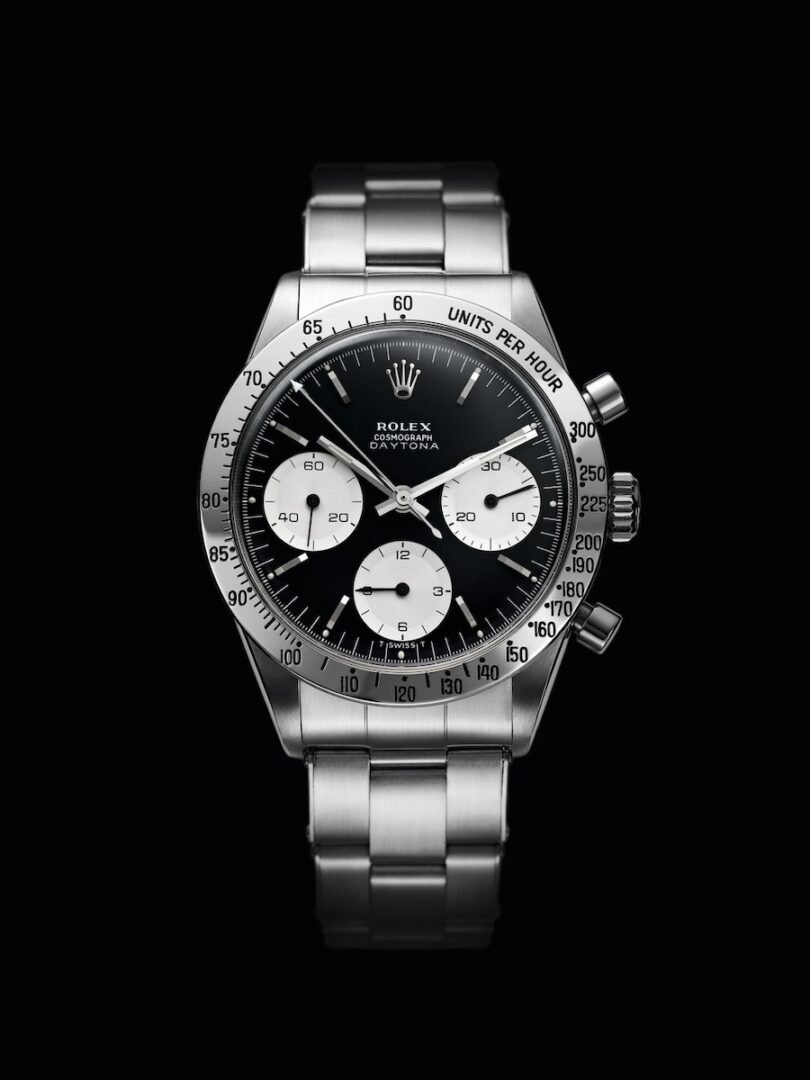
The first Rolex Oyster Perpetual Cosmograph Daytona – 1963.
In 1963, Rolex introduced the Oyster Perpetual Cosmograph Daytona. This watch, equipped with a mechanical chronograph movement, can be used to measure time intervals or calculate average speeds thanks to the tachymetric scale on the bezel.
The first Rolex Oyster Perpetual Sea-Dweller – 1967.
In 1967, the brand introduced the Oyster Perpetual Sea-Dweller. Waterproof to a depth of 610 metres (2,000 feet), this watch was designed for the pioneers of professional deep-sea diving. The case benefitted from an innovation patented the same year: the helium escape valve, which allows excess pressure built up inside the watch case to be released during a diver’s decompression phase in a hyperbaric chamber – a process inherent to saturation diving.
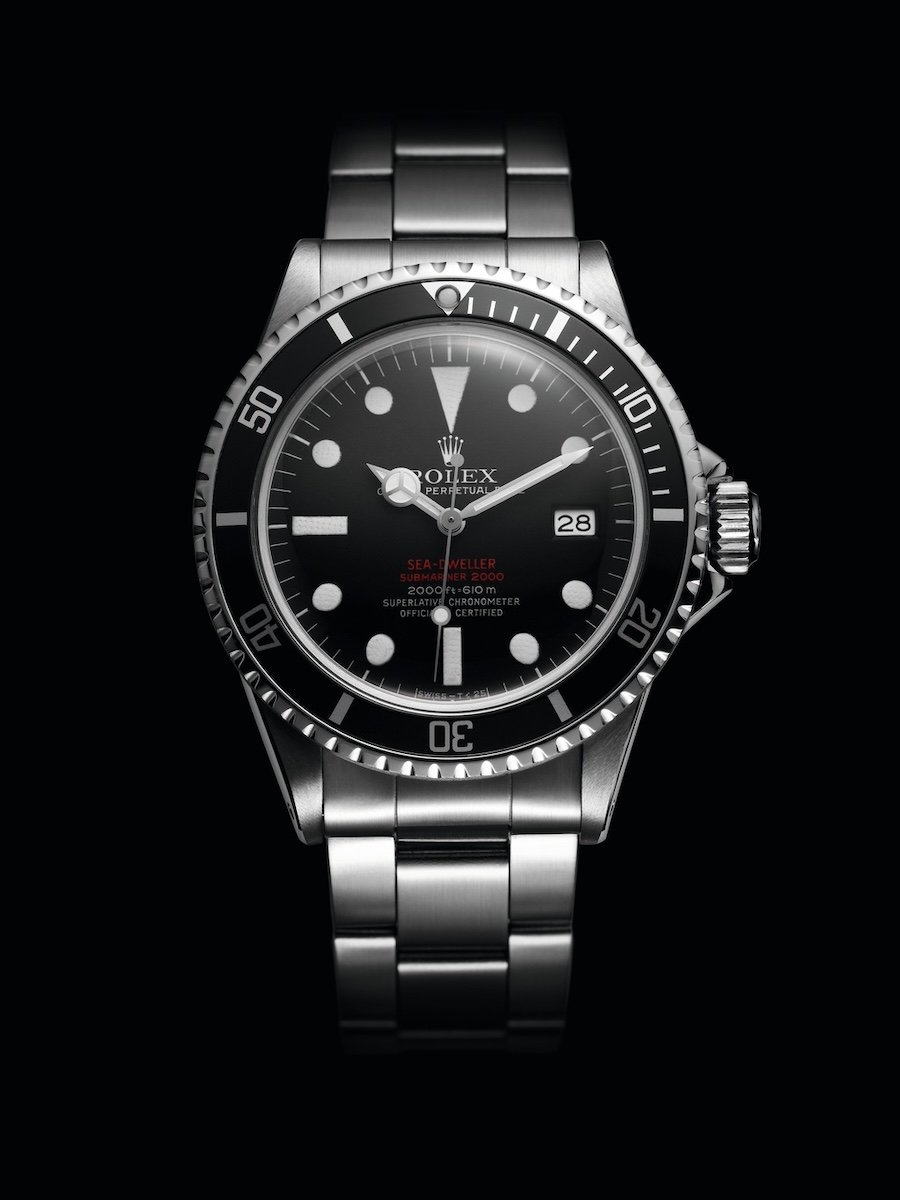
Rolex and quartz.
With the arrival of quartz in the late 1960s, Rolex participated actively in the development of the first Swiss quartz movement, the Beta 21. In 1977, it launched the Oysterquartz model equipped with a 100 per cent Rolex quartz movement. But the company dismissed the promise of this new technology and made the strategic choice to remain faithful to the mechanical watch, its domain of excellence.
A second generation of Oyster Perpetual Professional watches – 70s – 80s.
The 1970s and 1980s saw the dawn of a second generation of Oyster Perpetual Professional watches. In 1971, Rolex presented the Oyster Perpetual Explorer II. Dedicated to polar explorers and speleologists, this watch allowed the wearer to distinguish daytime hours from night-time hours thanks to its additional 24-hour hand and fixed 24-hour graduated bezel. In 1978, a new version of the Sea-Dweller appeared – the Sea-Dweller 4000 – waterproof to a depth of 1,220 metres (4,000 feet). And, in 1982 Rolex released the GMT-Master II – distinguished from the GMT-Master thanks to its movement, which enables the hour hand to be set independently of the minute and 24-hour hands.
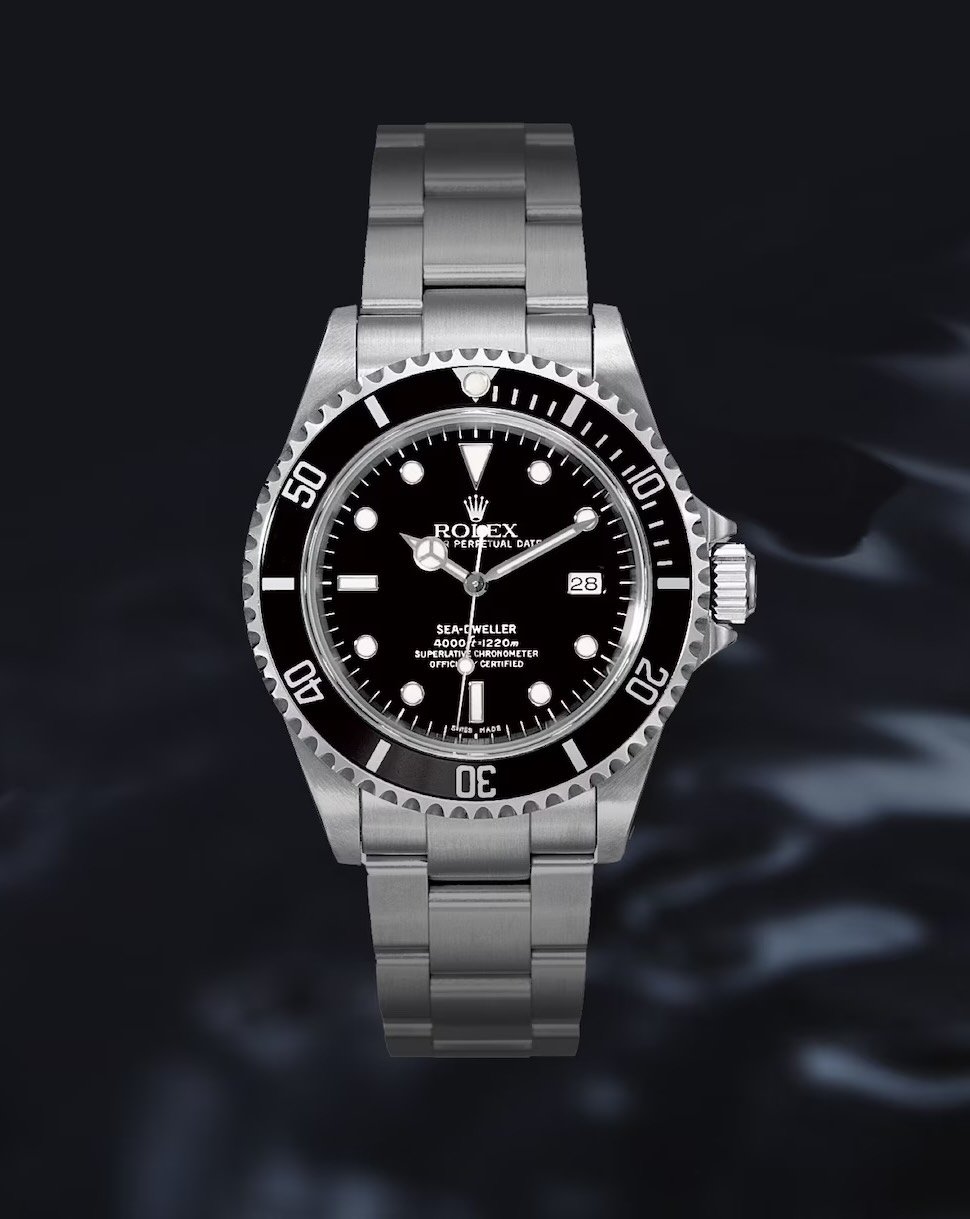
Rolex Sea-Dweller 4000 – 1978
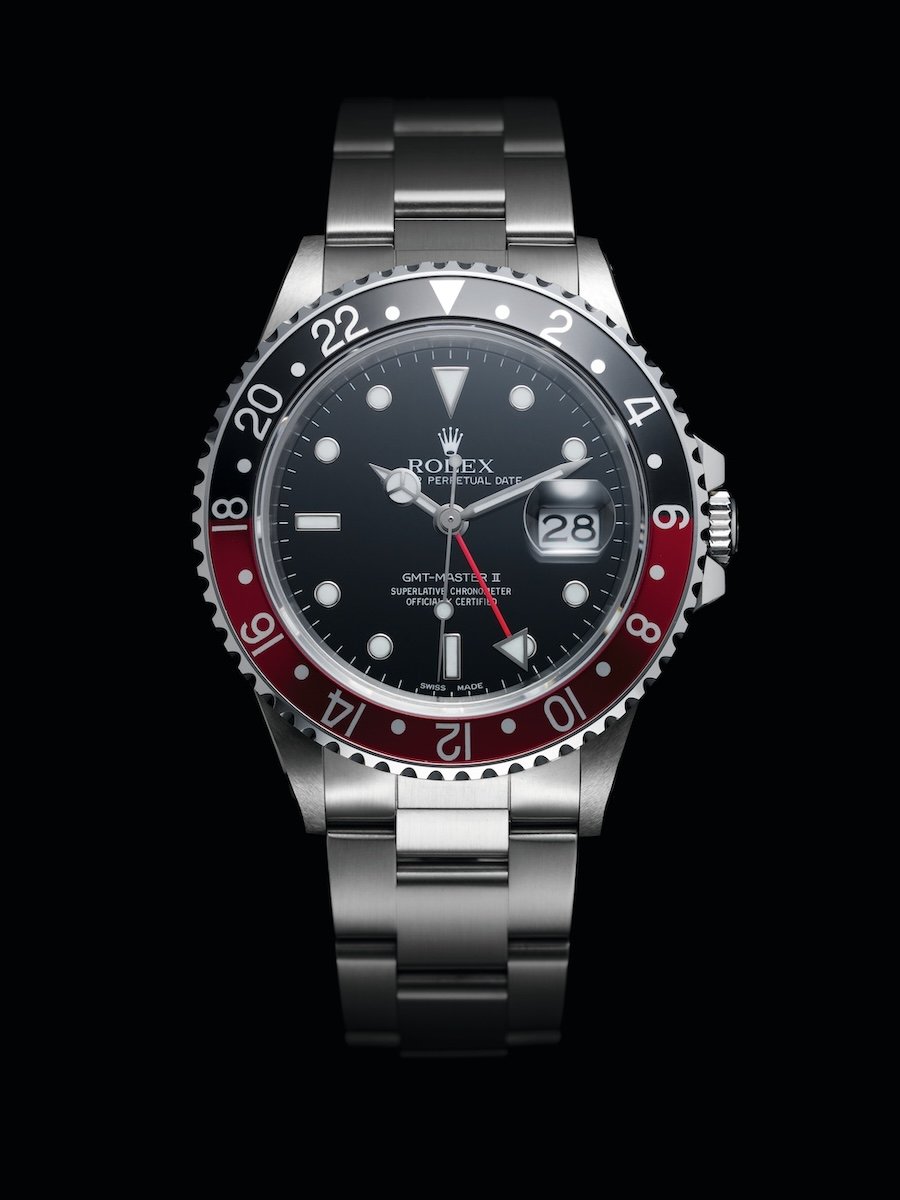
Rolex released the GMT-Master II
The Rolex Oyster Perpetual Yacht-Master – 1992.
In 1992, Rolex introduced the Oyster Perpetual Yacht-Master, the first model of the Oyster Professional Series watch, released in 3 sizes – 40, 35, 29 mm. This watch seamlessly connected Rolex to the realms of sailing and leisure.
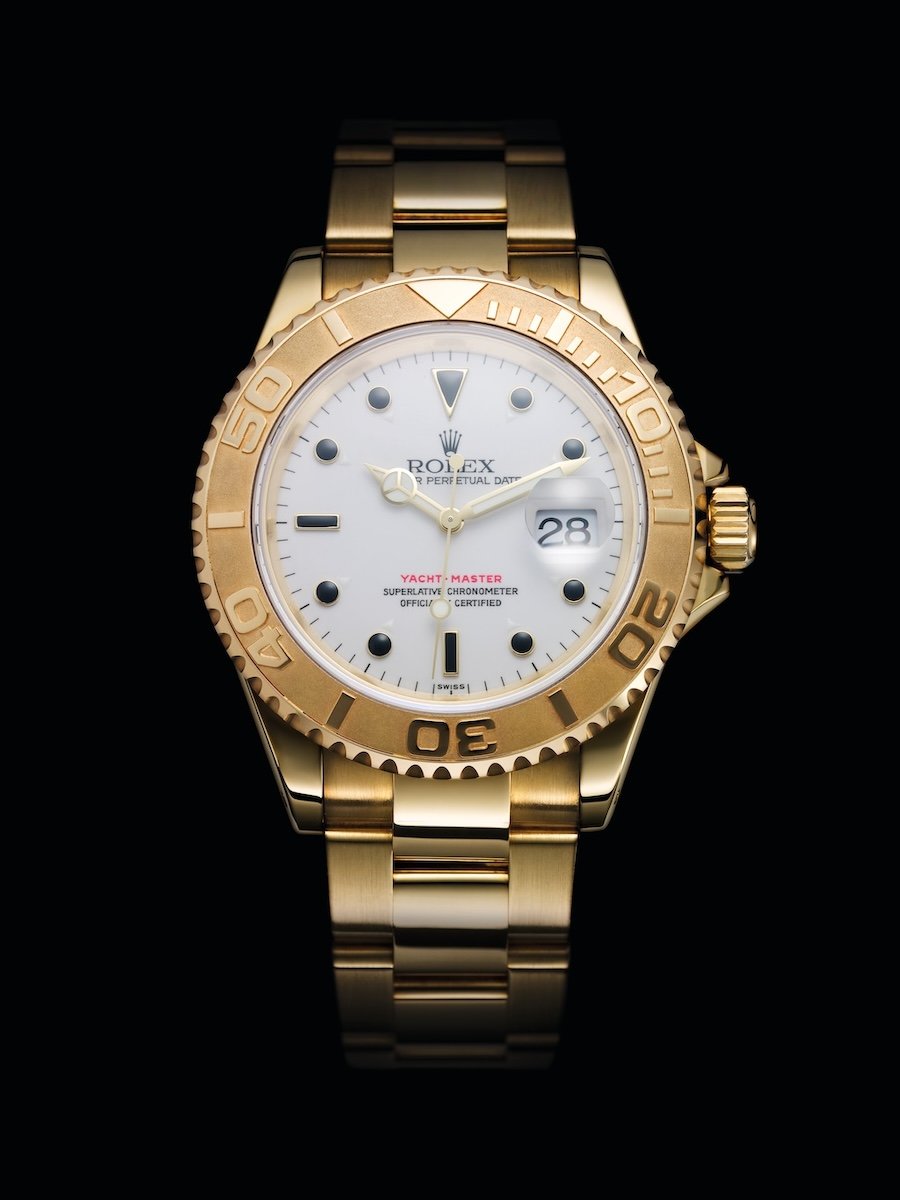
Vertical integration of Rolex.
Patrick Heiniger succeeded his father at the head of Rolex. In the mid-1990s, under his guidance, Rolex radically changed its structure and made the strategic choice of vertical integration, purchasing its principal suppliers in order to maintain its independence and entrepreneurial freedom. This step was accompanied by a decision to group all of its activities in Geneva and Bienne on four industrial sites specifically built or remodelled for the purpose. Impressive in size, these sites are technological watchmaking gems. Rolex thus had control over the production of all the main elements of its watches – movement, case, bracelet and dials – while at the same time giving itself the means to take its passion for quality even further, thanks to exclusive equipment. Independent and vertically integrated, Rolex was now equipped with exceptional industrial facilities in which designers, engineers, watchmakers and other specialists could work in close collaboration on the design and manufacture of the watches.
New generation of Rolex Cosmograph Daytona watches – 2000.
In 2000, Rolex launched a new Oyster Perpetual Cosmograph Daytona, a true distillation of expertise. From then on, the model benefitted from an innovative chronograph movement that was entirely developed and produced in-house, and equipped with a Parachrom hairspring manufactured by Rolex. Before that year, Rolex equipped the Daytona with the El Primero movement from Zenith.

This composite of niobium, zirconium and oxygen has the advantage of being up to 10 times more precise than a traditional hairspring in case of shocks and resistant to strong magnetic fields. The Parachrom hairspring will be progressively introduced to movements of other watches in the Oyster Perpetual collection.
New generation of Rolex Oyster Perpetual GMT-Master II.
In 2005, Rolex launched a new Oyster Perpetual GMT-Master II. Subtly redesigned, this watch was also equipped with a Parachrom hairspring and featured a bezel with a Cerachrom insert in black ceramic, another patented innovation. Entirely developed and manufactured in-house, the Cerachrom insert is made of extremely hard, virtually scratchproof ceramics whose colours are unaffected by ultraviolet rays. In addition, thanks to its chemical composition, the high-tech ceramic is inert and cannot corrode.
The Rolex Oyster Perpetual Yacht-Master II – 2007.
Presented in 2007, the Oyster Perpetual Yacht-Master II regatta chronograph was the first watch in the world equipped with a programmable countdown with a mechanical memory that can be synchronized on the fly. The countdown’s programming and setting functions are accessed via the rotatable bezel and the winding crown thanks to Ring Command, a patented system of interaction between the case and movement developed by Rolex.
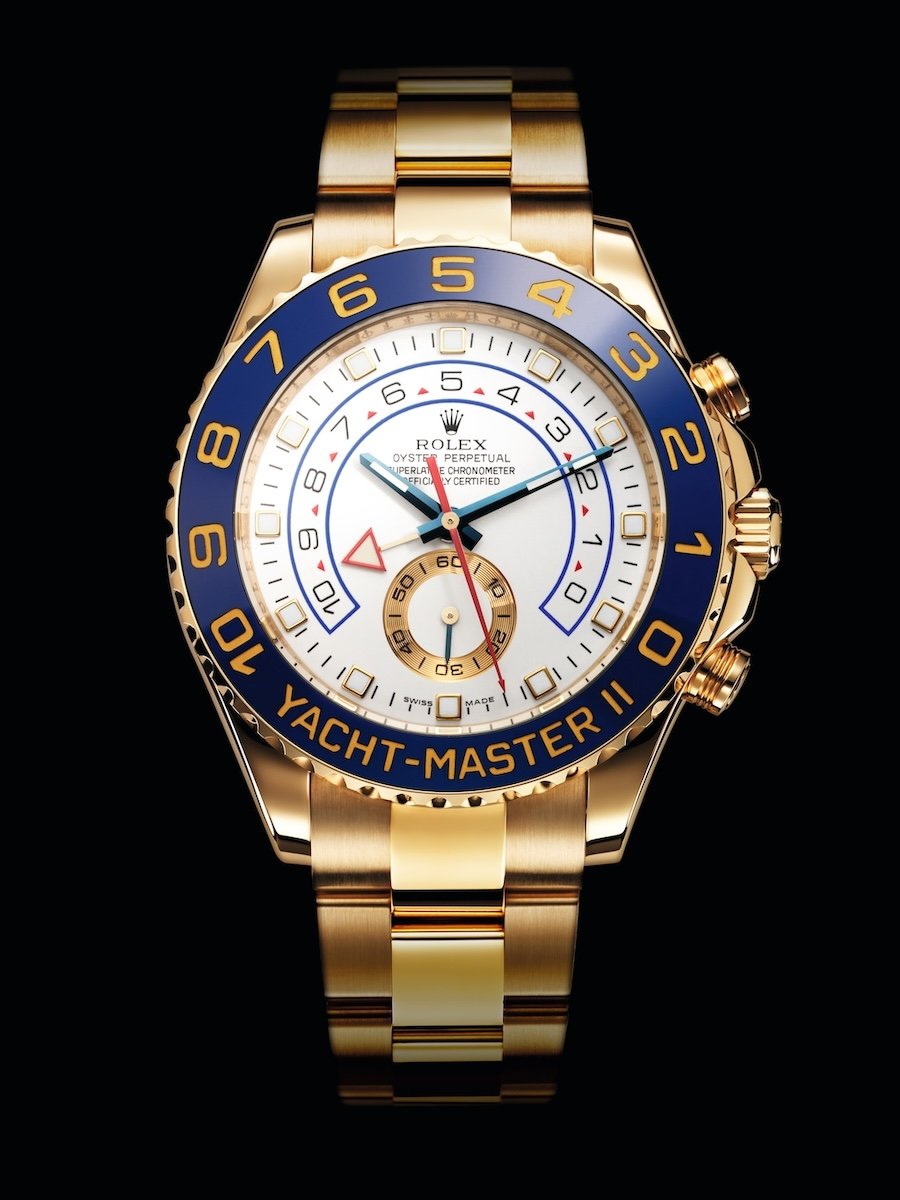
Rolex Oyster Perpetual Deepsea – 2008.
The launch, in 2008, of the Oyster Perpetual Rolex Deepsea, waterproof to the extreme depth of 3,900 metres (12,800 feet), fully illustrates the innovative ability of Rolex. This ultra-resistant divers’ watch features the Ringlock system, a patented case architecture developed by the brand.
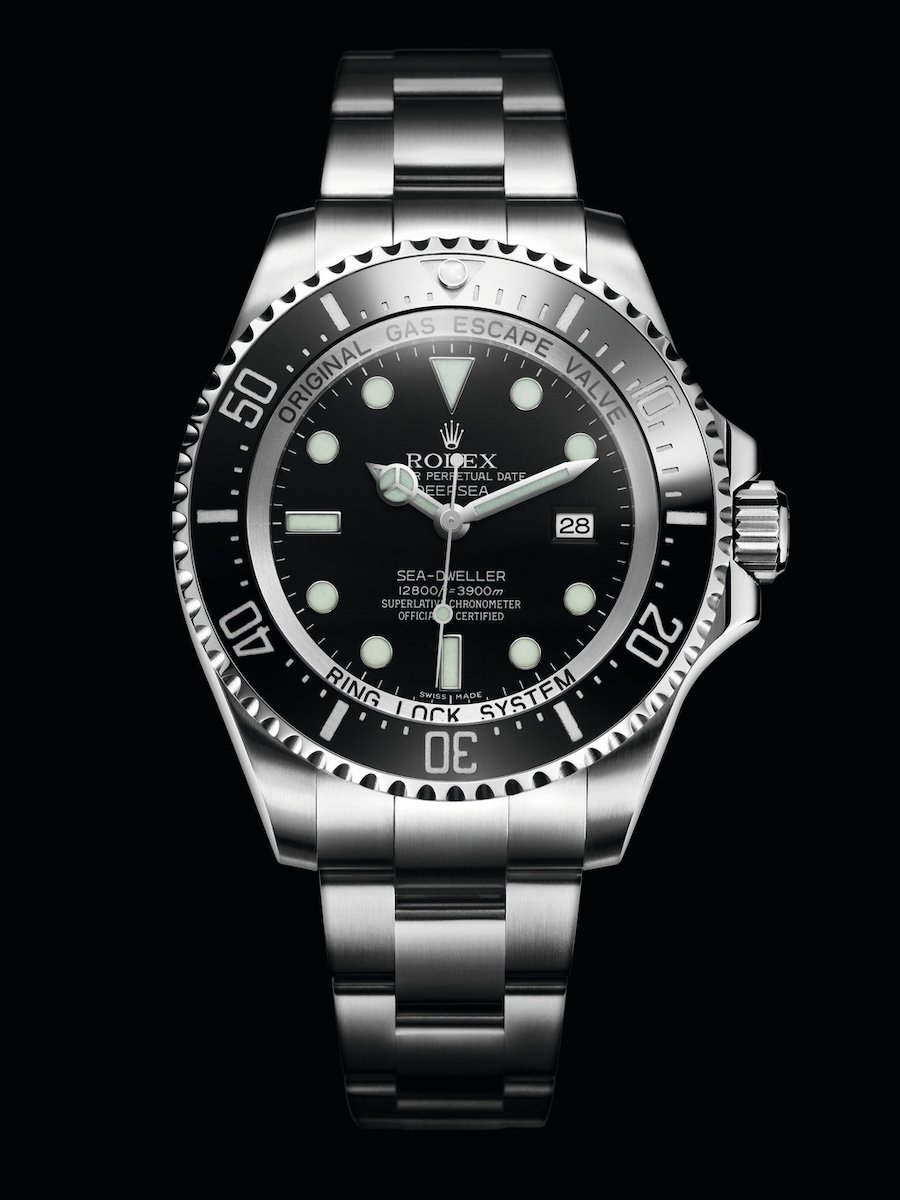
A high-performance compression ring, placed inside the case of the watch, bears the colossal pressure exerted at great depths on the crystal – which is 5.5 mm thick – and the case back, made from RLX titanium. The Rolex Deepsea was the first Rolex watch equipped with the high-performance Chromalight display. The hour markers, hands and embedded capsule at 12 o’clock on the rotatable bezel are filled or coated with a luminescent material emitting a long-lasting blue glow – for up to two times longer than traditional phosphorescent materials.
Rolex Sky-Dweller – 2012.
In 2012, Rolex presented a brand-new, particularly innovative model, the Oyster Perpetual Sky-Dweller. A technological masterpiece with multiple patent applications filed over the course of its development, this watch offers a dual time zone as intuitive to read as it is easy to use, as well as an innovative annual calendar named Saros, after the astronomical phenomenon of the same name. The calendar, which requires only one date adjustment per year as February changes to March, displays the date at 3 o’clock and the months in 12 apertures around the circumference of the dial.

Like the Yacht-Master II, the Sky-Dweller is equipped with the Ring Command system. This patented mechanism of interaction between the rotatable bezel, winding crown and movement, developed by Rolex, allows the user to select the watch’s functions – calendar (date and month), local time or reference time – by turning the fluted bezel, and then to set them using the winding crown.
Rolex Deepsea Challenge – 2012.
Also in 2012, true to its passion for underwater exploration, Rolex played an active part in filmmaker and explorer James Cameron’s DEEPSEA CHALLENGE expedition, in partnership with the National Geographic Society. On 26 March 2012, James Cameron descended alone on board a submersible 10,908 metres (35,787 feet) into the Mariana Trench, the ocean’s deepest point, situated in the Pacific Ocean, south-west of Guam. Attached to the submersible’s manipulator arm was an experimental model: the Rolex Deepsea Challenge. This divers’ watch was specially developed and manufactured for the occasion, confirming Rolex’s expertise in waterproofness.
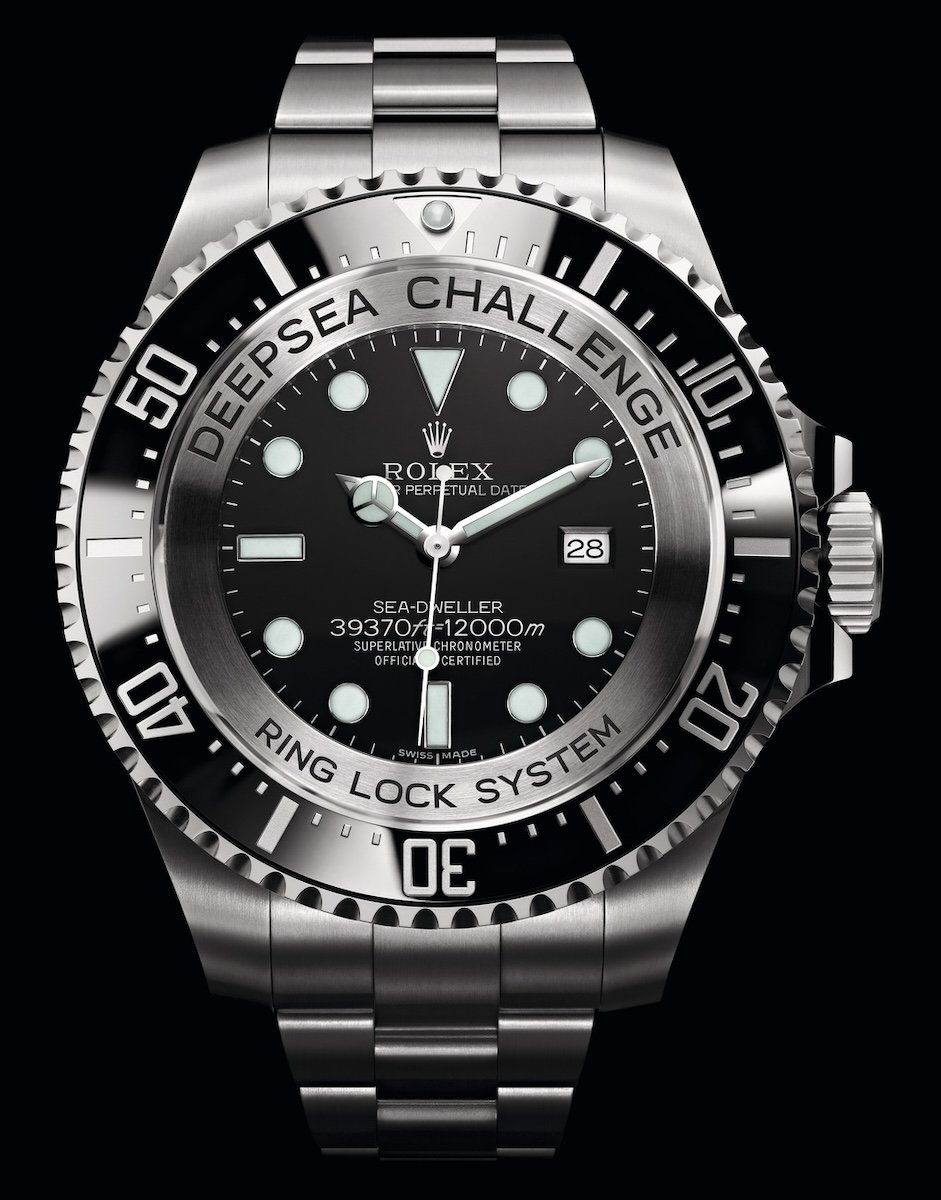
Both James Cameron’s feat and the Rolex Deepsea Challenge directly echo the underwater expedition led by Jacques Piccard and U.S. Navy Lieutenant Don Walsh in 1960.
I hope you enjoyed reading the chronology of the creation of Rolex models and gained insights into one of the most significant watch brands on the planet.
More details about Rolex on www.rolex.com


